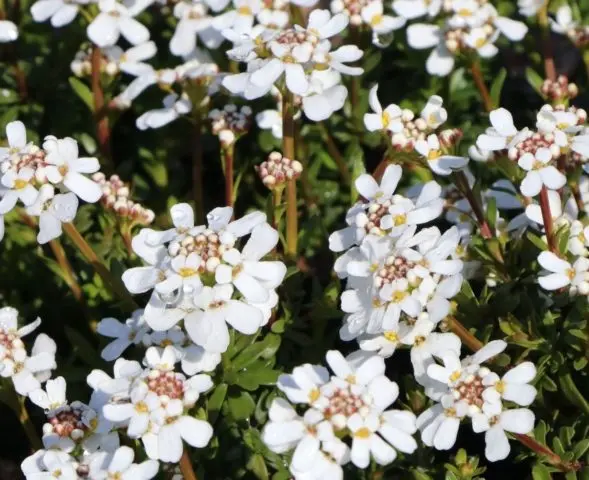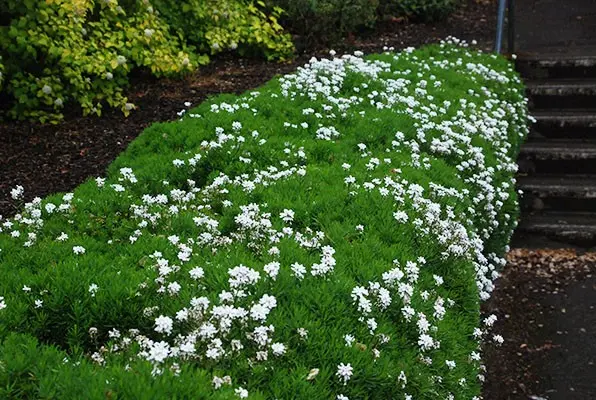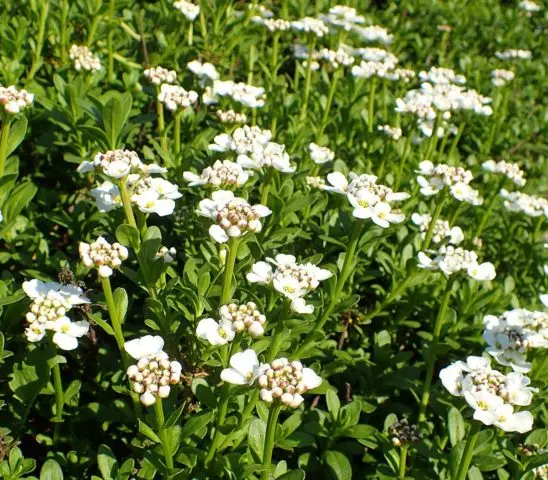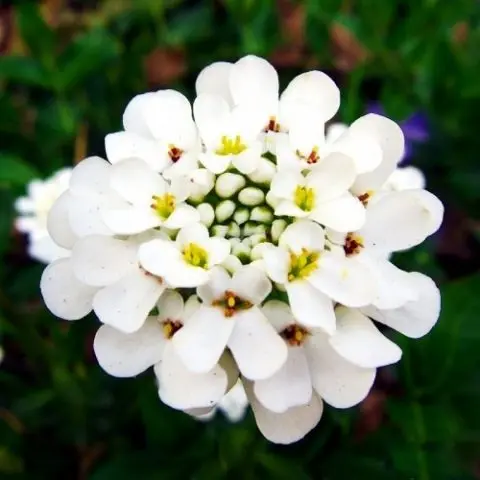Contents
Looking at the photo of Iberis in a flower bed, I want to admire the charm of this plant. It is not only very beautiful, but also widely applicable in landscape design. Its white, pink, lilac, lilac flowers are an integral part of the design of gardens, alpine slides, tubs.
Botanical description of iberis
Iberis (lat. Iberis), also Iberian, is a herbaceous plant belonging to the Brassicaceae family of the Brassicales order. Other well-known names are stennik, pepper, variegated. Most often, this plant is found in the mountains of Anatolia and the Caucasus, in the south of Ukraine, in the Crimea, in the lowlands of the Don. The genus Iberis includes over 30 different species that differ significantly from each other: annual and perennial, heat-loving and frost-resistant, herbaceous and shrubby.
What does iberis look like
This genus of plants is characterized by such external attributes:
- root – pivotal;
- creeping or erect stems;
- leaves are simple, dark green with a tint;
- flowers – up to 1 cm in diameter, form umbellate inflorescences, which is uncharacteristic for Cabbage;
- the color of the petals is white, pink, purple, lilac or red;
- corollas zygomorphic;
- stamens are simple, honey glands are located nearby;
- sepals erect, not saccular;
- fruits – bivalve pods in the form of an oval or circle, flattened on the sides, with a narrow partition, at the top – a deep notch;
- each nest contains 1 hanging ovule;
- the cotyledons are flat, the embryo is located on the side of them.
When and how it blooms
Iberis flowering begins in May or August, lasts up to 2 months. It is accompanied by lush, abundant shoots: sometimes there are so many flowers that leaves are not visible behind them. Iberis annuals bloom longer than perennials. Almost all species have pleasantly smelling, fragrant flowers.
Good germination persists for 3-4 years after harvest. Reproduction occurs through seeds, cuttings and division of the bush.
What is the difference between alyssum and iberis
Burachok or alyssum is the closest relative of Iberis. They are very similar in appearance, and the smell of flowers is almost identical. People often use these two plants together when planting their flower beds, along with liatris and bergenia. The differences between them are as follows:
- Alyssum leaves are endowed with a grayish color, and not dark green, like the Iberian.
- Since ancient times, alyssum has been known for its healing properties: it is used for hernias, urolithiasis, and bites. Of the Iberis, only varieties of umbrella are used for medical purposes.
- Alyssum’s native habitats are the Mediterranean region and, in particular, the coast of the Bay of Biscay.
- Alyssum blooms in areas without frost can continue throughout the year.
Types and varieties of Iberis
There are many common types of annual and perennial iberis, with photos and descriptions of varieties. In total, at the moment there are about 40 plant species. Among annuals, gardeners usually cultivate only 2 species – umbrella and bitter.
Umbrella
Surprising with its beauty, Iberis with bright purple flowers reaches a height of up to half a meter. This species has been cultivated since the XNUMXth century. Popular varieties are shown in the photo.
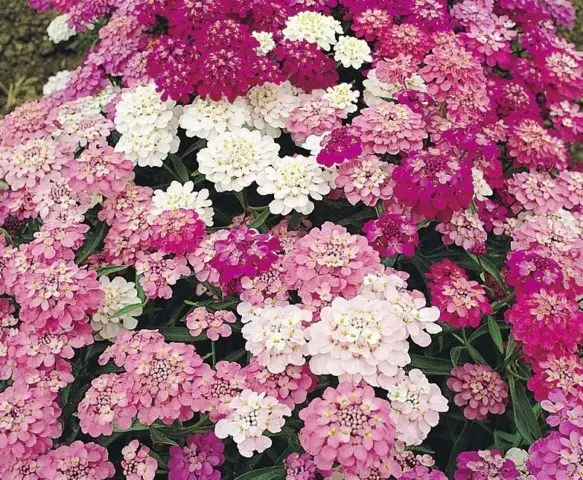
Fair Mixture – a combination of seeds with different colors looks good

Albida – 30 cm spherical bush with dense inflorescences of small white flowers
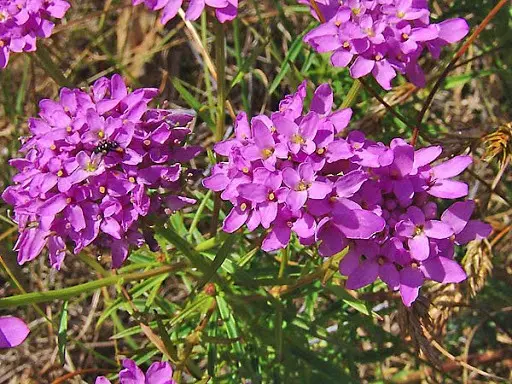
Dunnetti – a characteristic feature of this variety – purple inflorescences in the form of umbrellas
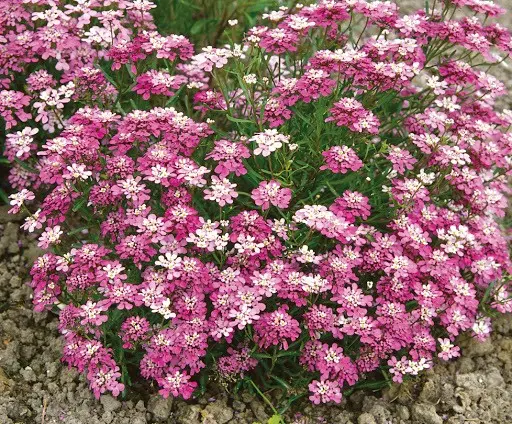
Tourmaline – has densely growing pink and purple flowers

Confetti – the plant loves the sun, stretches up to 30-35 cm, the flowers have different colors – from white to scarlet
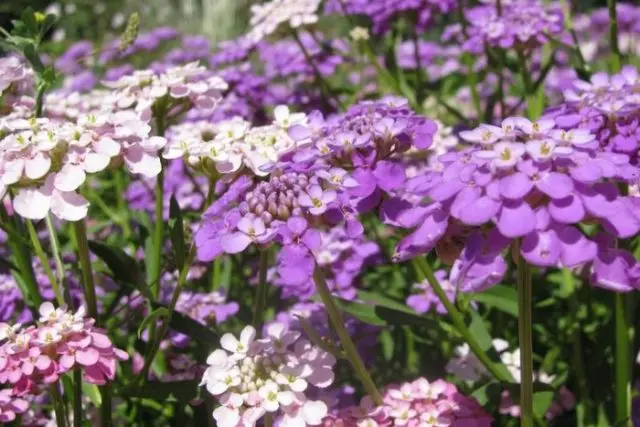
Collage – another mix of colors, this time – white, lilac and dark purple
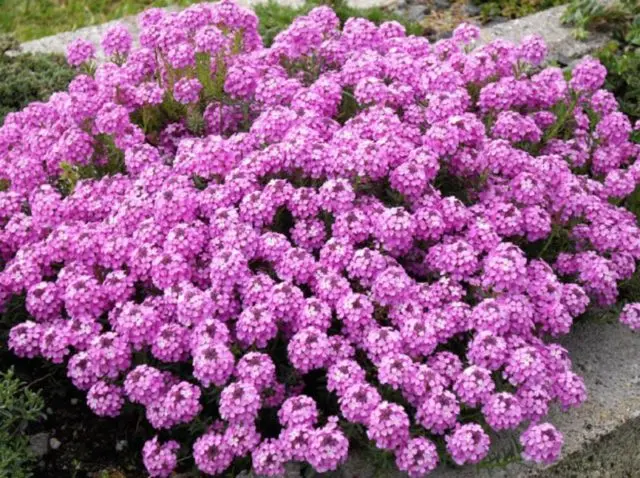
Pink dream – Iberis with amazingly beautiful and fragrant hot pink flowers, a true decoration of any garden
Another 2 well-known varieties of this type of Iberis are Red Rash with red and purple flowers and Pomegranate Ice (the combination of white and red-scarlet inflorescences creates a semblance of pomegranate seeds mixed with ice cubes).
The umbrella Iberis Iceberg deserves special attention. This is a beautiful plant with fragrant white flowers, 30-35 cm tall.
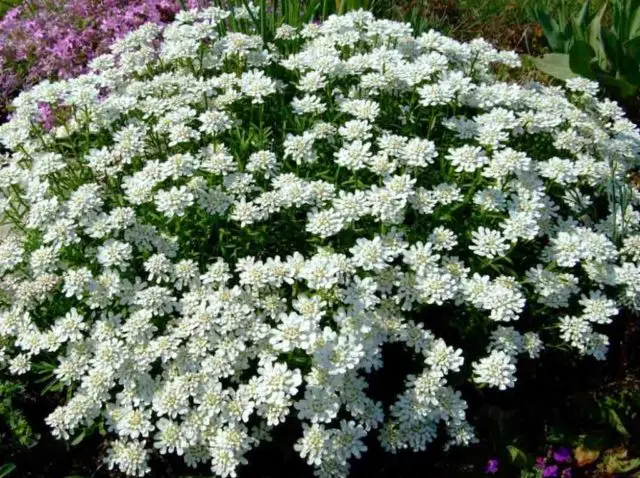
Iceberg blooms at the very end of spring and serves as a good honey plant.
Bitter
This annual has branching stems and white or lavender flowers. There are many popular varieties.
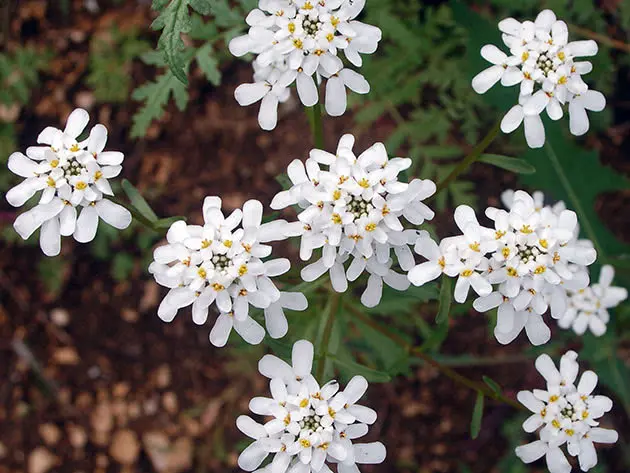
Tom Tumb – a very low iberis (up to 20 cm) with white flowers

Weiss Risen – looks almost the same, but can reach up to 30 cm in height
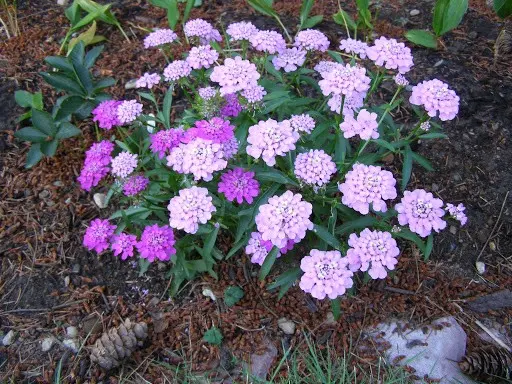
Hyacintenblutige Risen – a variety with a delicate lilac color of flowers, 35 cm high
hyacinth flower

The bitter iberis variety Giant Hyacinth Flowered won a special love of gardeners.
Representatives of this species are endowed with beautiful white inflorescences that have an external resemblance to hyacinths.
Another variety of hyacinth iberis is Express.
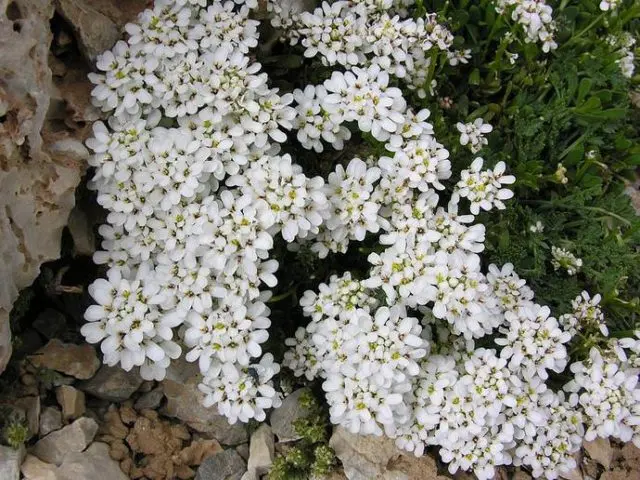
Express bushes grow tall (up to 35 cm) and enchant with beautiful white flowers
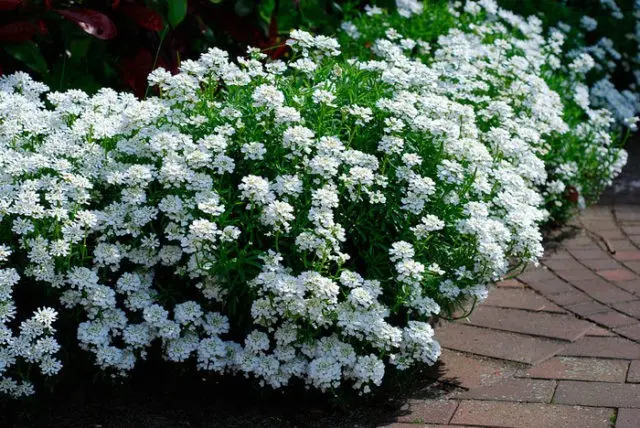
Hyacinth-flowered iberis Empress – a common decorative variety, dense green clumps with snow-white flowers are characteristic
Unlike annuals, among perennials there are many more species for cultivation.
Iberis Gibraltarica (Gibraltarian)
This is one of the most famous and beloved species among the people. Gibraltar Iberis, also known as Chameleon, is a semi-evergreen plant with small pink flowers on the bushes. It is extremely unstable to winter conditions, and usually dries up in the second winter. Because of this, this type of Iberis is closer, rather, to biennials. The height of the bush is 25-30 cm, the diameter is up to 40 cm. And it is called the Chameleon because of the tendency of the flowers to gradually change their color scheme.
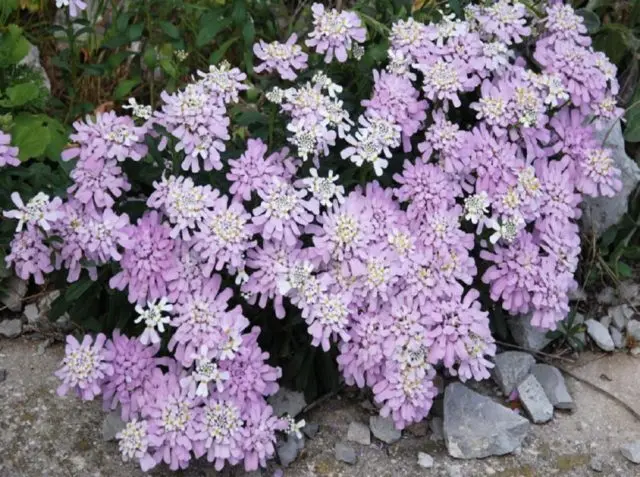
Gibraltar Canditaft – an amazingly beautiful shrub with lilac flowers that turn snow white over time
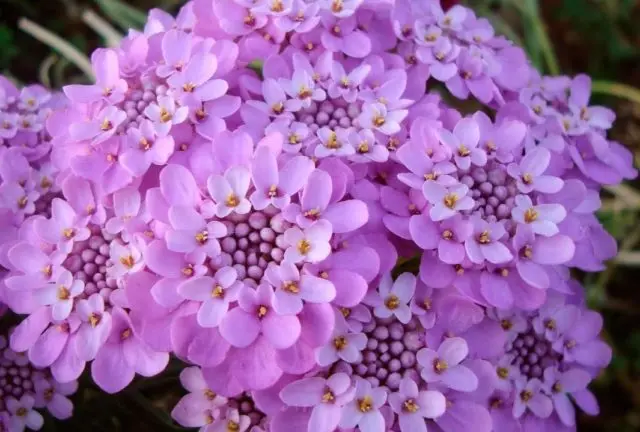
Alexandrite – fast growing Gibraltar Iberis with soft purple inflorescences
Another variety of Gibraltar Iberian Sweetcandy, with white or red flowers, is usually grown on borders.
Crimean
Iberis Simplex is a 5-10 cm tall perennial with grey-green leaves. Its buds are purple, and the flowers after opening are white.

Crimean Iberis grows on mountain slopes under continuous exposure to sunlight
Evergreen
Iberis Sempervirens (evergreen) is a perennial semi-shrub up to 40 cm in height, originating from Anatolia. White flowers form umbellate inflorescences, and the leaves remain green throughout the year – hence the name of this species. Iberis evergreen is optimal for growing in pots, tubs and flower beds. Blooms profusely in early summer for a month, sometimes it repeats again at the end of summer.
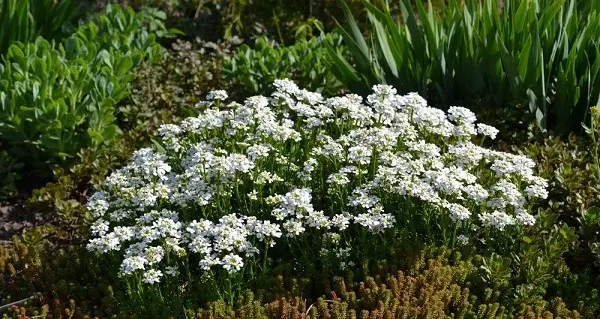
Dana – densely flowering 15 cm bush
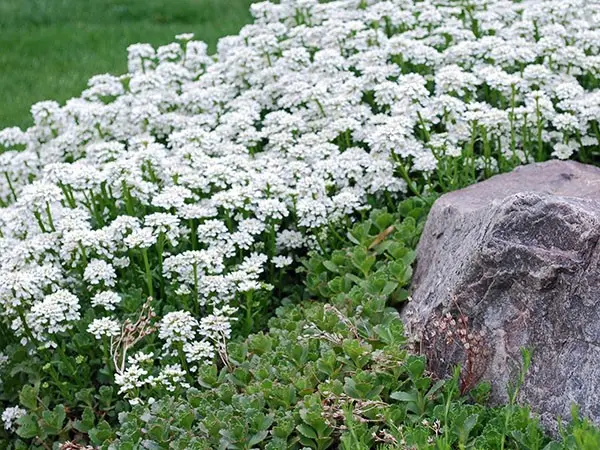
Snowflake (Snow flakes) – a variety with narrow leaves and flowers of a milky white hue
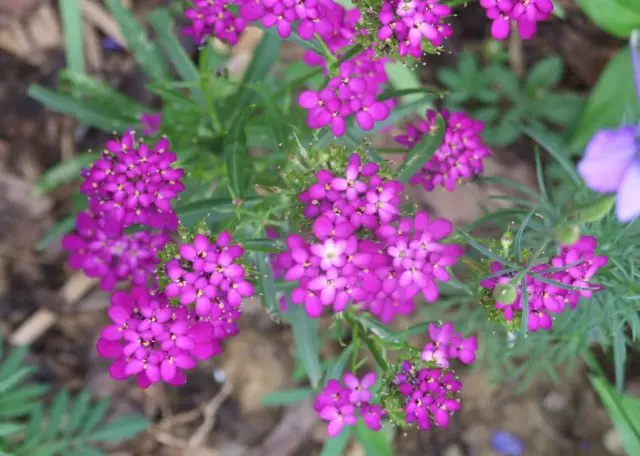
Lapis Lazuli – Iberis with pink and purple inflorescences

Semi-shrub 15 cm high, resembling a carpet, with white and slightly bluish flowers
Also very popular in gardening are:
- Appen-Etz – tall (up to 35 cm) plant with white inflorescences;

- Little Gem – a lush bush up to 0,5 m in diameter, with white flowers and evergreen emerald leaves in the shape of a semicircle;

- Findel – a branched shrub 20-25 cm high, blooms quickly, but fades just as quickly;

- Whiteout – a charming snow-white perennial;

- Climax – this bush forms thickets that look like carpets – with thick leaves and an abundance of white flowers.

Rocky
This species grows in the rocky landscapes of southern Europe, from the Pyrenees to Asia Minor.
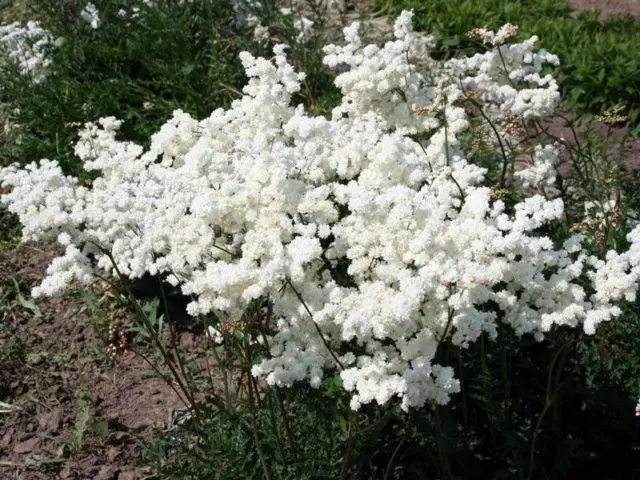
The flowers of the evergreen iberis in a flower bed resemble a snowdrift of dense snow that covers the stems with leaves.
This low shrub blooms in April-May. The most famous variety of this species is Pygmy, a bush no higher than 10 cm with umbellate inflorescences of white flowers.
Iberis in landscape design
People who care about the aesthetic beauty of their garden or flower bed often resort to using iberis in decor. Gardeners highly appreciate the plant for its multicolor and pleasant aroma, and these qualities are especially pronounced when decorating alpine slides and flower tubs.
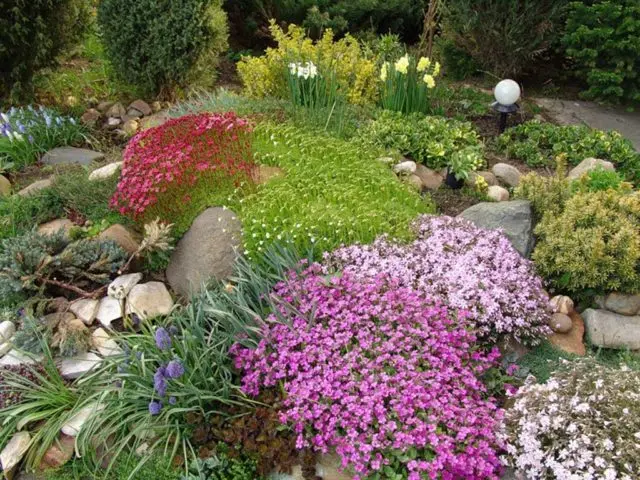
Iberis – an integral element in garden design
Iberian is an unpretentious plant in the care during the germination period: you do not need to fertilize and water the ground often, it is enough to thin out the seedlings and remove wilted inflorescences. This is another advantage of its use in the decoration of garden areas. In addition to alpine slides, Iberis will look organically in lawn borders, on curbs and paths.
Application in other areas
Varieties of umbrella iberis Collage, Confetti and Pomegranate ice, due to their richness of colors, are used as an element of bride’s wedding bouquets. In general, umbrellas are the only species that are used for medicinal purposes. Their preventive properties will be effective:
- with problems with the work of the gastrointestinal tract and liver;
- in violation of circulatory processes;
- with women’s diseases;
- in people with joint diseases;
- with oncology.
Conclusion
Photos of Iberis in a flower bed every time cause genuine aesthetic pleasure. There are almost 40 species of this plant, all of them are actively used in landscape design, in the design of alpine slides, in the decoration of flower tubs and borders. A particular advantage of Iberis is that it does not require much care during the growth process.










